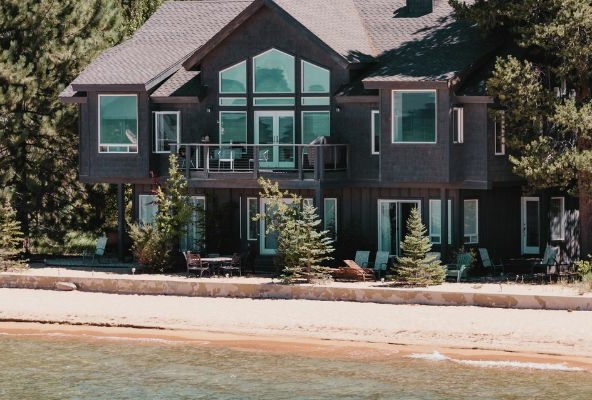The concept of luxury real estate ownership has long been associated with exclusivity, prestige, and significant financial investment. Traditionally, owning a luxury property—whether a beachfront villa, a mountain retreat, or a sophisticated urban penthouse—was reserved for the affluent few who could afford to maintain such assets, even when they might be used only a few weeks each year. However, a new trend has been reshaping this landscape: luxury co-ownership. This model allows discerning buyers to enjoy the privileges of owning ultra-luxury homes at a fraction of the cost while sharing ownership with like-minded individuals. In this article, we delve into what luxury co-ownership entails, how it works, and why it is gaining popularity in the luxury real estate market.
Understanding Luxury Co-Ownership
Luxury co-ownership is a model where a group of individuals jointly owns a high-end property, dividing both the purchase price and ongoing maintenance costs among them. Unlike traditional fractional ownership or timeshares, luxury co-ownership focuses on offering true equity and deeded ownership. Co-owners each hold a share of the property, typically ranging from one-eighth to one-half, depending on the structure of the ownership. Each share corresponds to a certain number of weeks or months of use annually, allowing co-owners to enjoy the property without the full financial burden and responsibilities that come with sole ownership.
This model appeals to high-net-worth individuals who want to invest in luxury real estate without overcommitting financially or feeling guilty about an underused asset. For example, a family may want to own a villa in a picturesque location, but if they only plan to spend a few weeks there each year, co-ownership provides a smart and efficient way to achieve this.
How Does Luxury Co-Ownership Work?
The luxury co-ownership model typically operates through a property management platform or company, such as Svazer, which curates and manages the properties. Here’s a breakdown of how it works:
1. Property Selection and Acquisition
Luxury co-ownership companies handpick premium properties in sought-after destinations. These homes are meticulously chosen based on location, amenities, design, and potential for value appreciation. Once a property is selected, it is divided into shares, usually eight or twelve, depending on the ownership structure.
2. Deeded Ownership
Each co-owner purchases a fraction of the property, which grants them deeded ownership rights. This means they hold a share in the property, just as they would if they bought a traditional home outright. Their names are included on the title deed, giving them a tangible and legally recognized stake in the property.
3. Usage Rights
Co-owners have the right to use the property for a specified number of weeks each year, proportionate to their ownership share. Scheduling systems are often employed to ensure fair and flexible access, allowing owners to plan their stays well in advance while accommodating spontaneous trips.
4. Property Management and Maintenance
One of the key advantages of luxury co-ownership is the convenience it offers. The management company handles all aspects of property upkeep, from housekeeping and maintenance to utilities and repairs. This hassle-free management ensures that the property is always in pristine condition, ready for owners whenever they visit.
5. Exit and Resale Options
Co-owners can sell their shares in the property if they wish to exit the arrangement. The value of their share is typically tied to the market value of the property, allowing for potential appreciation over time. Some platforms even assist with resale, making the process smooth and transparent.
The Rising Popularity of Luxury Co-Ownership
Luxury co-ownership is rapidly gaining traction in the real estate market, and several factors are driving this growth.
1. Affordability and Financial Efficiency
The most obvious benefit of co-ownership is the reduced financial burden. Purchasing a luxury property outright requires significant capital, but co-ownership divides that cost among multiple buyers. This makes acquiring a high-end home more accessible without compromising on quality. Additionally, ongoing expenses such as property taxes, insurance, and maintenance are shared, resulting in lower individual costs.
2. Maximized Use and Value
A significant challenge for luxury homeowners is underutilization. Many luxury properties remain vacant for most of the year, representing a poor return on investment. Co-ownership addresses this issue by matching the amount of time owners plan to spend in the property with their financial investment. For those who only need the property for a few weeks annually, co-ownership ensures they’re getting the most value out of their purchase.
3. Sustainability and Resource Sharing
As sustainability becomes increasingly important to affluent buyers, co-ownership offers a more responsible way to own luxury properties. By sharing resources, energy consumption, and maintenance, co-ownership reduces the environmental impact compared to sole ownership. This aligns with the growing trend of conscious luxury, where consumers prioritize experiences, value, and environmental stewardship.
4. Hassle-Free Management
The convenience of professional management is a major draw for co-owners. High-end properties require constant upkeep, which can be time-consuming and stressful. With a co-ownership model, the management company takes care of everything, ensuring that the home is always well-maintained. This means co-owners can focus on enjoying the property rather than dealing with the logistical complexities of ownership.
5. Flexibility and Diversification
Co-ownership allows buyers to diversify their real estate investments. Instead of sinking all their capital into one property, they can invest in multiple homes across different locations. This not only provides access to a variety of luxury experiences but also spreads risk, making it a sound financial strategy. Whether it’s a ski chalet in the Alps, a beachfront retreat in the Maldives, or a city penthouse in New York, co-ownership allows individuals to build a diverse portfolio of luxury homes.
6. Social and Networking Benefits
Luxury co-ownership platforms often attract like-minded individuals, creating a network of sophisticated and well-connected people. This can lead to social opportunities and networking benefits that go beyond just property ownership. Co-owners may form relationships, share experiences, and even collaborate on business ventures.
Conclusion
Luxury co-ownership is transforming the way people think about owning high-end real estate. By providing access to world-class properties at a fraction of the cost and responsibility, this model appeals to those who want to enjoy the perks of luxury living without overcommitting their resources. It’s a smart, flexible, and efficient solution for modern buyers who value experiences, convenience, and financial prudence. As the demand for shared ownership continues to grow, platforms like Svazer are poised to lead the way in making luxury second homes more attainable and enjoyable for a broader audience.




